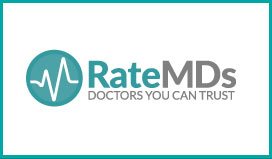Comprehensive Eye Exams
Our Services

Comprehensive Eye Exams
We provide comprehensive eye exams to patients of all ages. Our services include Cataract Surgery, Refractive Lens Exchange, and treatments for a range of conditions such as cataracts, glaucoma, diabetic eye diseases, dry eye syndrome and macular degeneration.
Routine eye exams are an invaluable tool in maintaining eye health by detecting and preventing disease. Some diseases, such as glaucoma, develop gradually without causing pain or vision loss, so patients may not notice any visual changes until significant and irreversible damage has been done. Early detection of any problems can reduce the risk of further harm and allow for a choice of treatment options.
Who should get an eye exam?
Patients should see their doctor for a comprehensive eye exam every one-to-three years, depending on their age, family history, and overall physical condition. Children should have regular tests to ensure the proper development of their vision and prevent any interference with their academic achievements. Older adults are often at a higher risk for eye conditions such as glaucoma, macular degeneration and cataracts. Even if your eyes are healthy, you should still have a regular eye exam to detect any problems as soon as possible and begin necessary treatment.
What happens during an eye exam?
An eye exam is different from a vision screening, which only tests vision and is commonly performed by a school nurse, pediatrician, or other health care provider. Only your eye doctor can perform a comprehensive eye exam to evaluate the overall health of the eye and detect any changes that may indicate a vision disorder. During a routine eye exam, your doctor will evaluate your eyes for refractive errors and common conditions such as:
- Nearsightedness, Farsightedness, and Astigmatism
- Presbyopia
- Cataracts
- Glaucoma
- Dry Eye Syndrome
- Diabetic eye disease
- Macular Degeneration
This is done through thorough examination of the eyes as well as a series of eye tests including a visual field test, dilation, glaucoma test, slit-lamp examination, cover test, and refraction. These tests can all be performed in your doctor’s office.
After completing the comprehensive exam and coming to an accurate diagnosis, your doctor will develop a treatment plan based on the findings of the exam. This treatment plan usually includes a prescription for eyeglasses or contact lenses, medication, eye vitamins, vision supplements, or surgery for certain conditions.
Diabetic Evaluation and Care
Patients with diabetes are at an increased risk of developing eye diseases that can cause vision loss and blindness, such as diabetic retinopathy, cataracts, and glaucoma. These and other serious conditions often develop without vision loss or pain, so significant damage may be done to the eyes by the time the patient notices any symptoms. For this reason it is very important for diabetic patients to have their eyes examined once a year. Diagnosing and treating eye disease early can prevent vision loss. It is also important to maintain a steady blood-sugar level, take prescribed medications, follow a healthy diet, exercise regularly, and avoid smoking.
Cataract Surgery
When cataracts reduce vision so that normal activities become difficult, it is time to consider surgery, which is the only way to remove cataracts. At Eye Care Medical Group, removal of the cloudy lens is accomplished with a brief and painless method, which has been developed to ensure a high degree of success. Cataract surgery involves removal of the eye’s natural lens material and an artificial lens, called an intraocular lens (IOL), is placed in the same position as the natural lens.
The cataract is removed in a ten-minute procedure where a small opening (less than 3mm) is made at the edge of the cornea to allow the surgeon to break up the lens of the eye using ultrasound and remove it in tiny pieces. An artificial lens implant (IOL) made of silicone or acrylic is folded, inserted into the eye, and unfolded in the proper position. In this position, the new lens will remain permanently. The new lens can be selected to correct nearsightedness, farsightedness, presbyopia, or astigmatism.
It is primarily the patient who determines when surgery is needed. Some patients have mild cataracts but major problems with glare and halos that make it difficult to drive a car at night or fly a plane, for example. If it is determined that these complaints are due to cataracts, surgery can be considered. Other patients may have more advanced cataracts but few complaints. For example, a patient who no longer drives and only needs to watch TV and read with a bright light may have little difficulty, and so surgery would not be needed. The concept that the cataract is “ripe” or ready is no longer considered a valid indication for surgery.
- Click Here to read our Cataract frequently asked questions.





Please contact our office directly at 831-476-1298 to schedule an appointment, or for more information about our services click here.